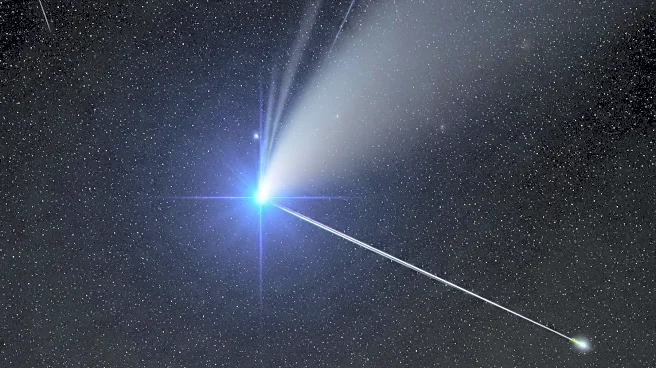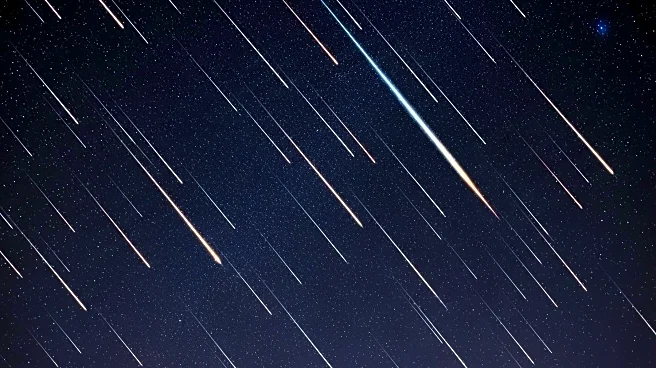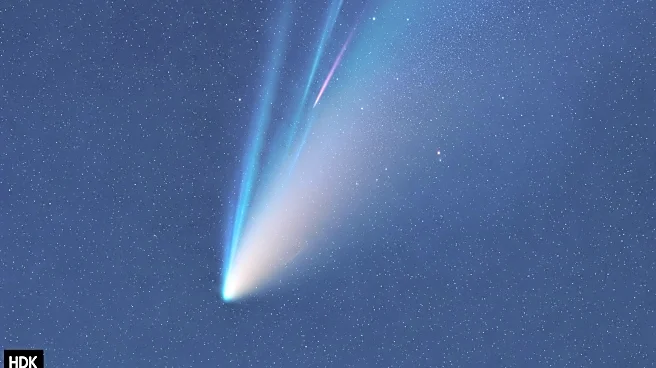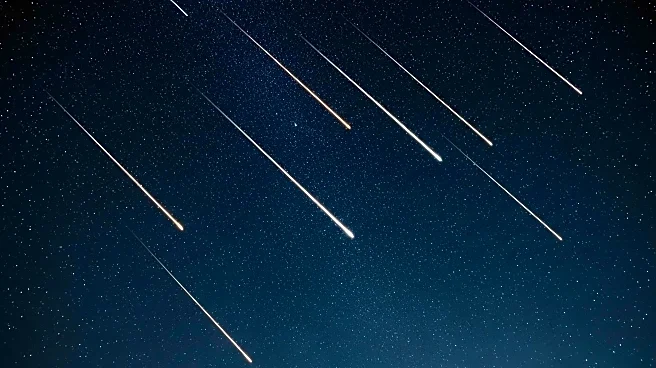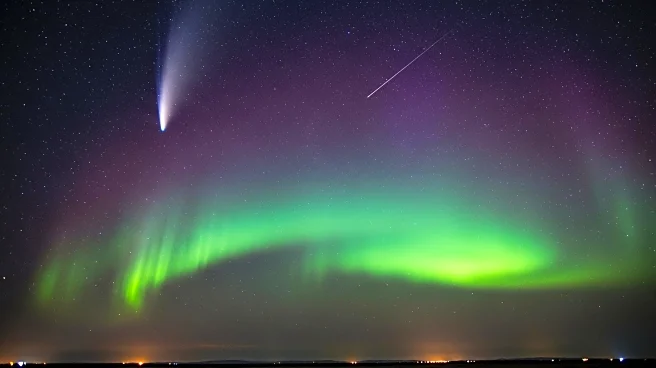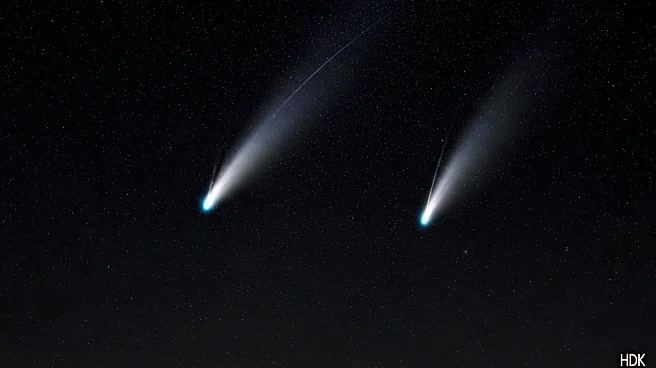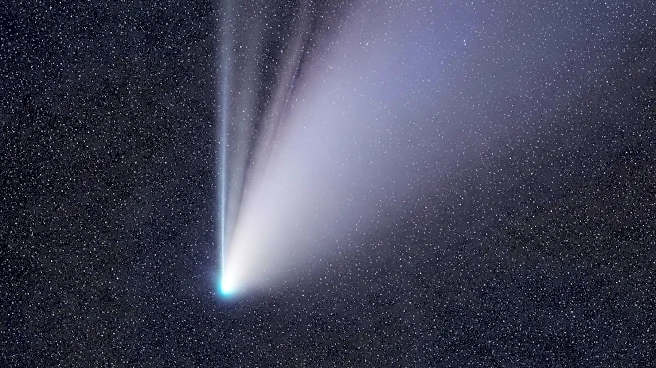What's Happening?
In October 2025, two newly discovered comets, C/2025 A6 (Lemmon) and C/2025 R2 (SWAN), will be visible in the night sky simultaneously. Comet Lemmon, discovered in January 2025, is expected to brighten to magnitude 4 by late October, making it faintly visible to the naked eye. It will be closest to Earth on October 21, 2025. Comet SWAN, discovered in September 2025, will make its closest pass by Earth around October 20, 2025, at a distance of 25 million miles. It is expected to peak near magnitude 6, requiring binoculars for viewing.
Why It's Important?
The simultaneous visibility of two comets is a rare astronomical event, providing a unique opportunity for skywatchers and astronomers to observe these celestial bodies. This occurrence highlights the dynamic nature of the solar system and the ongoing discoveries in astronomy. It may increase public interest in space science and encourage amateur astronomers to engage in skywatching activities. The event also coincides with the Orionid meteor shower, offering a rich celestial experience.
What's Next?
Observers in the Northern Hemisphere will have the best view of Comet Lemmon, while Comet SWAN will be visible in the western evening sky. As the comets approach their peak brightness, astronomers and enthusiasts will continue to monitor their trajectories and brightness levels. The event may lead to increased public participation in astronomy-related activities and discussions about the solar system's dynamics.
Beyond the Headlines
The appearance of these comets underscores the importance of ongoing astronomical research and the role of observatories in tracking celestial objects. It highlights the unpredictability of comet behavior and the need for adaptive observation strategies. The event may also inspire educational initiatives focused on cometary science and the history of comet observations.

